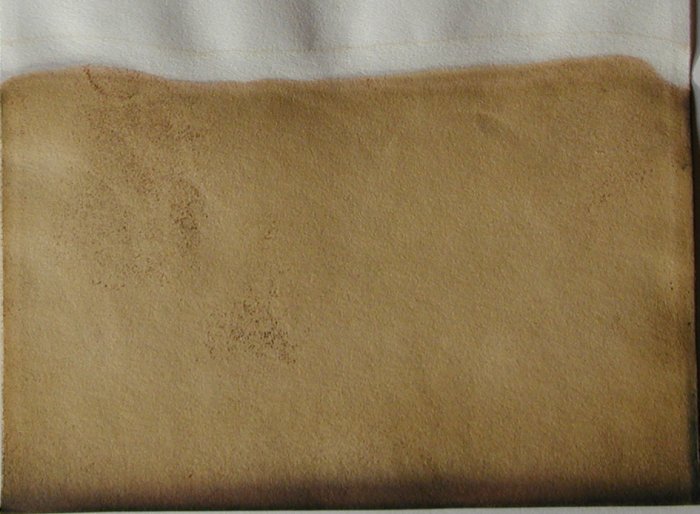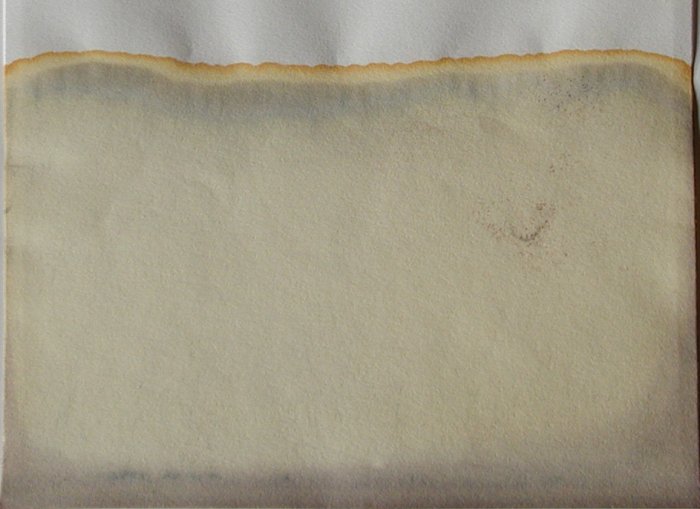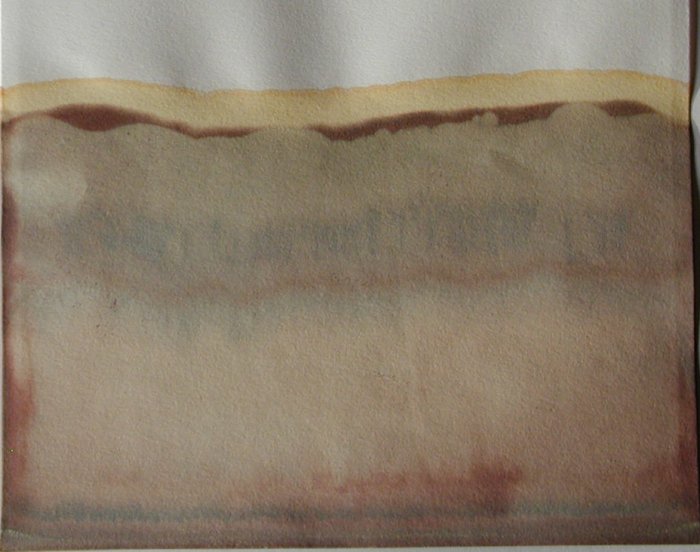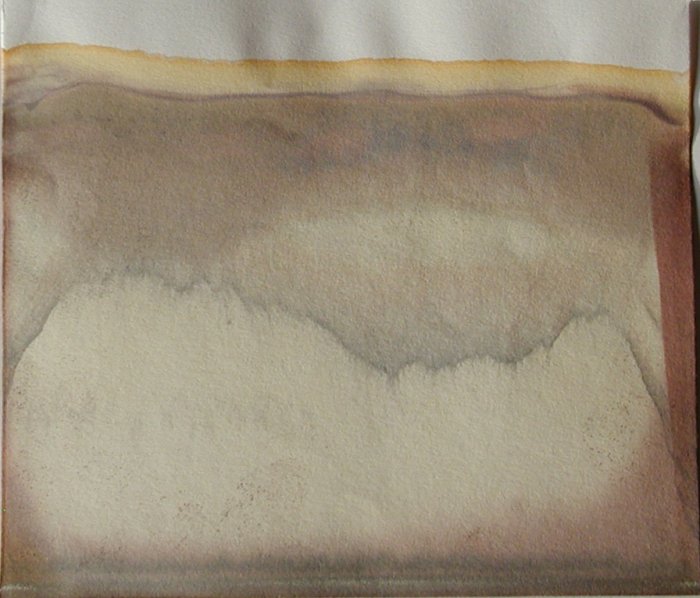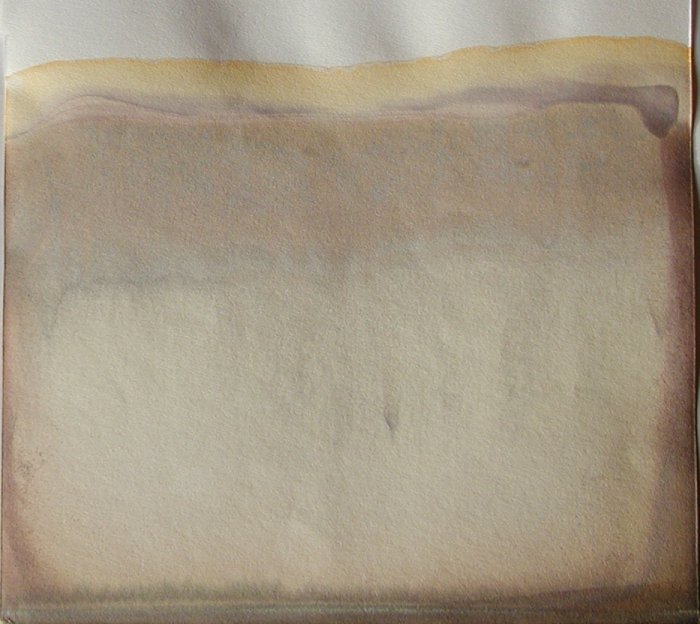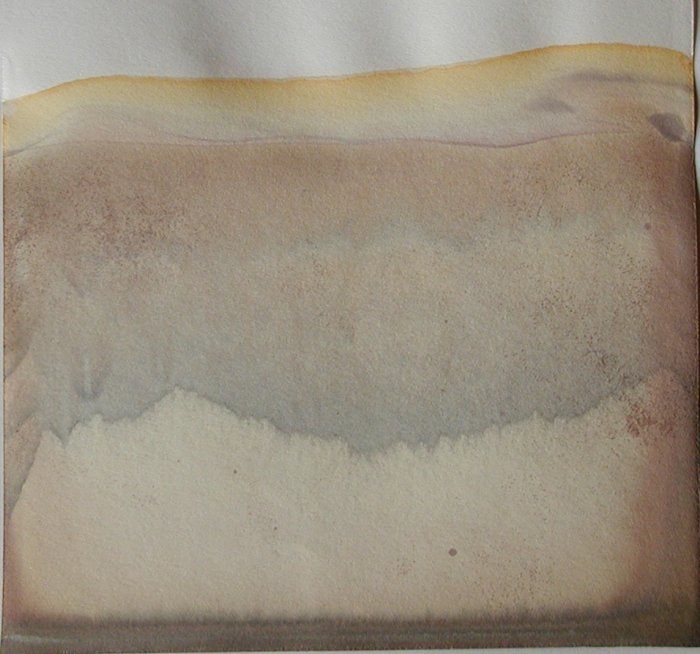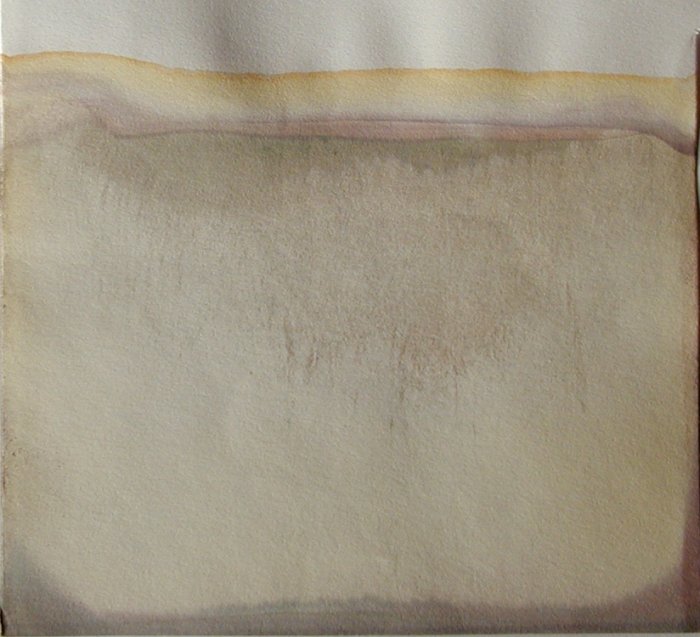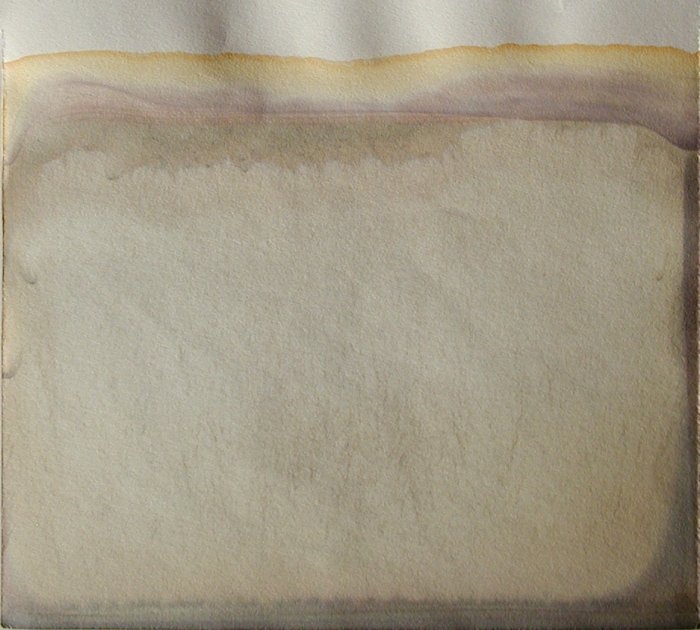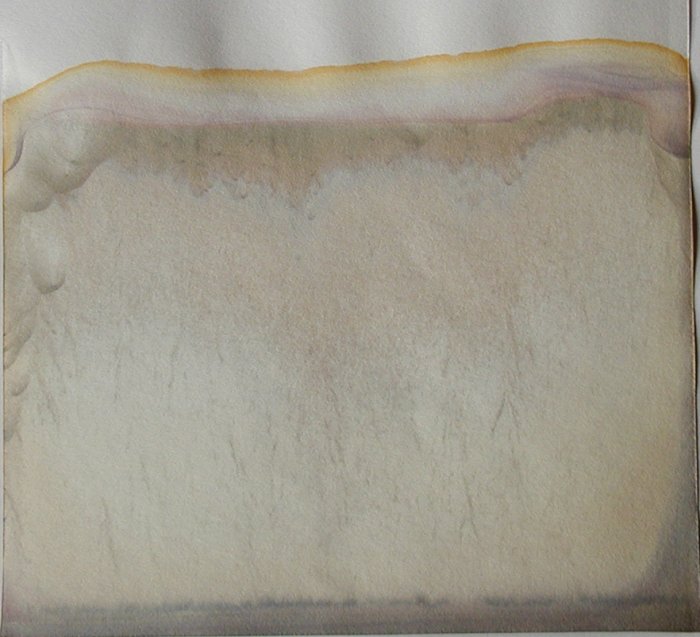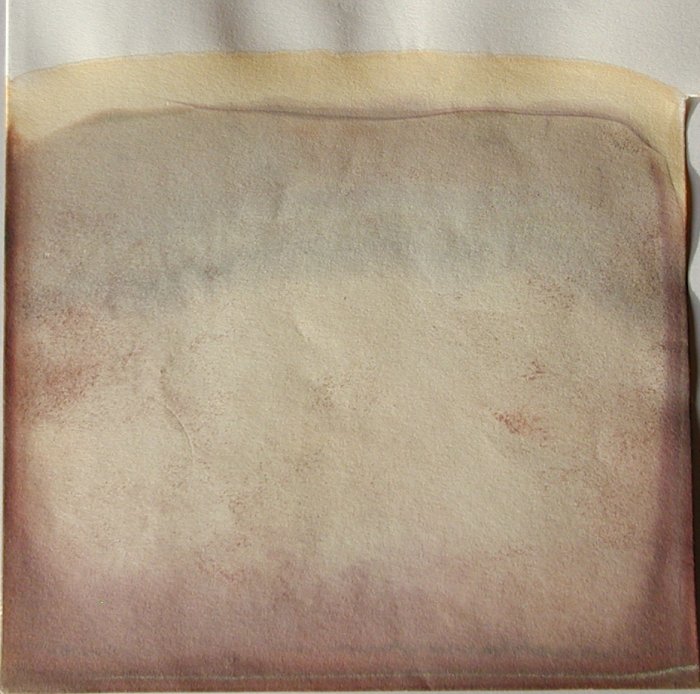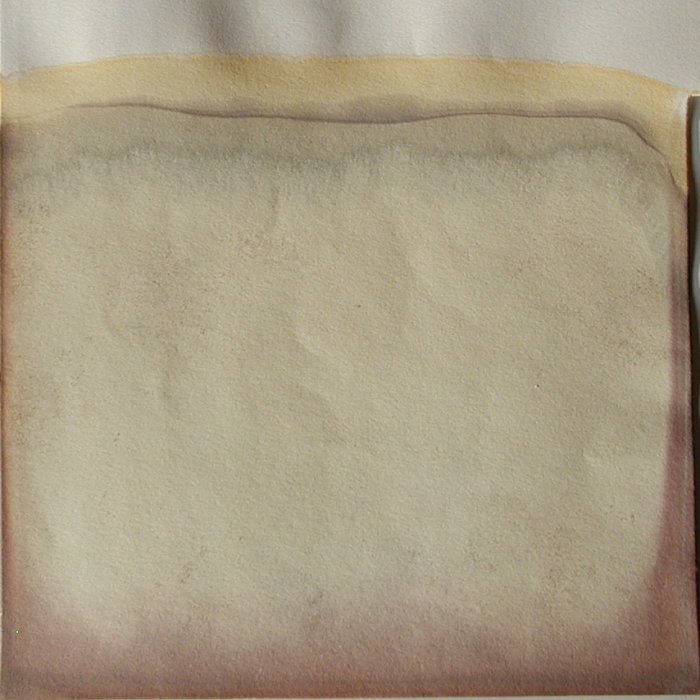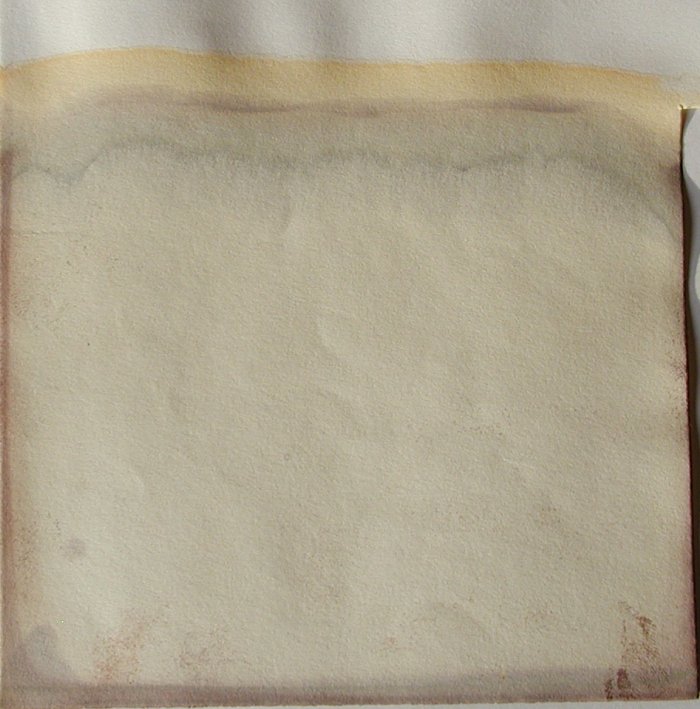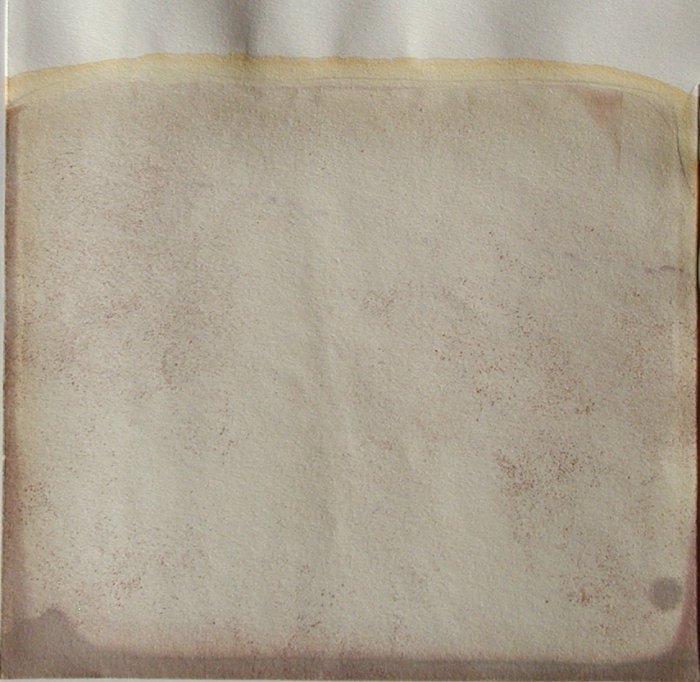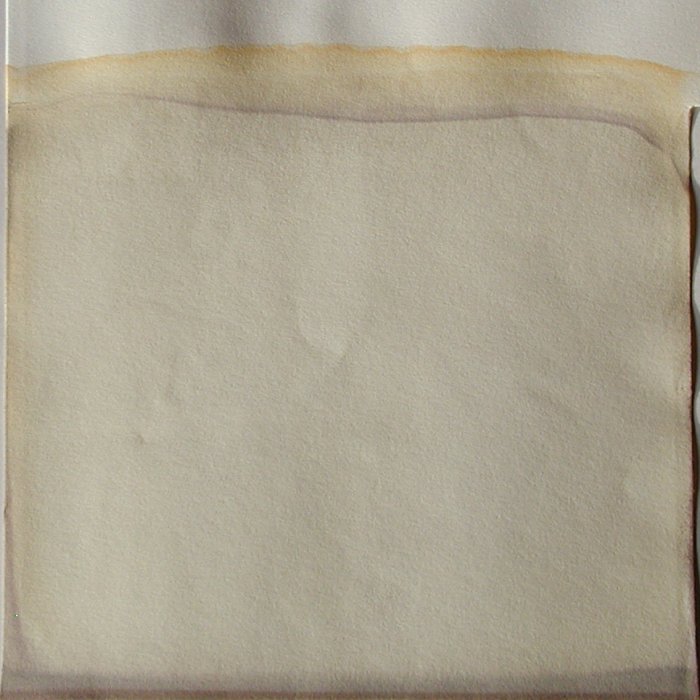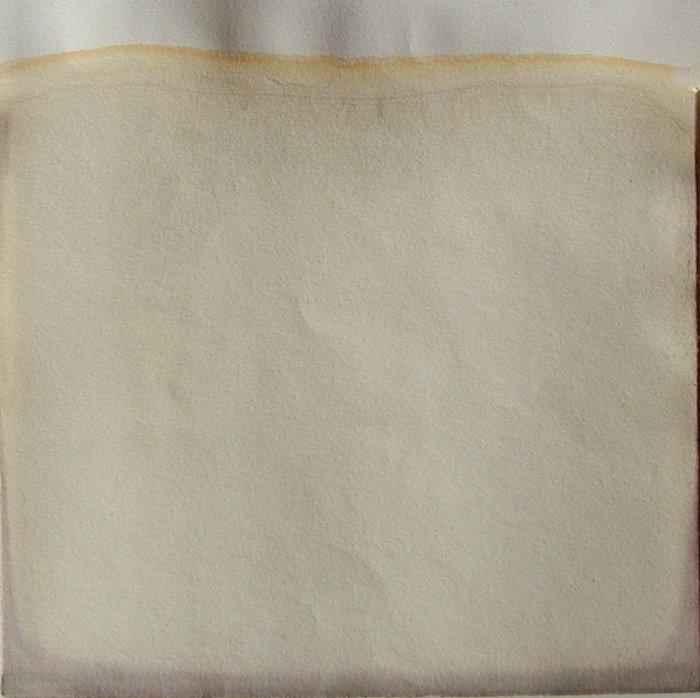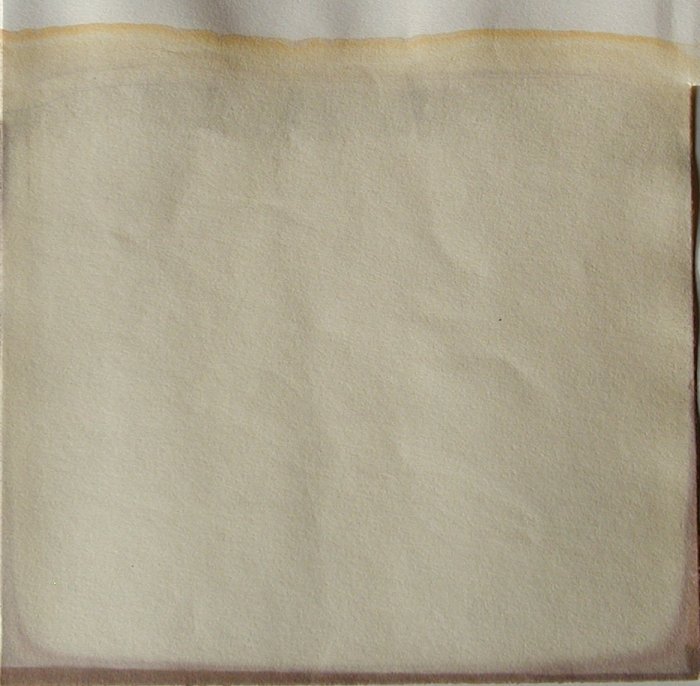Experiments at Moon-Saturn conjunctions using the capillary dynamolysis method of Lilly Kolisko
Dirk Rohde
Editorial introduction: The following is a translation by David Heaf of an article which appeared in Elemente der Naturwissenschaft (79, 2003 (2), pp. 123-131). In it, Dirk Rohde was responding to an earlier article by Václav Záveský in the same journal which concluded: ‘Despite many capillary dynamolysis experiments, we cannot show in a single series of chromatograms a significant change in the pattern which correlates temporally with a particular planetary constellation.’1 Rohde found that in his own experiments this was not always the case. In this contribution to the journal’s ‘colloquium’ he gives a short introduction on the problems facing the Waldorf school chemistry teacher when wishing to present experimental evidence of Rudolf Steiner’s indication regarding the cosmic connections of the earthly metals and then goes on to describe some of his own experiments. The images in the original paper were in black and white. We thank Dirk Rohde for re-photographing his filter papers for this colour re-publication of his article.
I was very pleased to read the excellent, comprehensive and highly informative article by Václav Záveský on his research into Lili Kolisko’s capillary dynamolysis method.1 I find the results of his painstaking and detailed investigation very instructive and they largely confirm my own observations with the method. That is why I would personally have very much welcomed it if the article had been published a lot earlier. However, in one respect my results diverge from Záveský’s. He wrote: ‘Despite many capillary dynamolysis experiments, we cannot show in a single series of chromatograms a significant change in the pattern which correlates temporally with a particular planetary constellation.’ In my experiments this was not always the case.
My approach to this work stems from Stockmeyer’s compilation of Rudolf Steiner’s Waldorf school curriculum for class 12 chemistry lessons where the topics ‘protein’, ‘formic acid’ and ‘oxalic acid’ are also mentioned: ‘The metal processes in man should be approached in such a way that something of the lead principle in man can be understood by the pupils. You must show that all matter and processes are transformed in man.’2 Not much has been published on teachers’ experiences with the topic ‘lead in the chemistry lesson’. (While this paper was in press the Kassel Research Centre also published on this topic3.) Steiner’s challenge to teachers here may at first pose something of a riddle to anyone who takes it up along with his other indications on lead.
How does one get beyond the stage of conventional lead experiments that can be read about anywhere? Chemistry teachers certainly cannot merely pass on Steiner’s research results, but rather it should be possible to demonstrate them experimentally during lessons and then relate them to concepts relevant to today’s pupils. Von Baravalle, one of the early teachers at the first Waldorf school, drew attention to this problem: ‘”In fact metals do not come from the earth, but are rayed in from the cosmos” … How do we know that? From the depths of Steiner’s spiritual science it is said that planets work on metals. So where then is the documentation of this? When presented with a mineral, I ask: how we are supposed ever to justify such an assertion? And apart from that: how are we supposed to make such things clear to the children from the phenomena?’4 Certainly Záveský is right when he writes: ‘The challenge of making the cosmic forces fruitful for practical life is a lot more important than just demonstrating such forces experimentally. Ultimately we can learn to distinguish the effects of the cosmic and earthly forces on any plant.’ Even so, it does not seem satisfactory to me to approach Steiner’s challenge regarding lead via botanical studies, for instance with hornbeam. It is above all experimentation that is an indispensable component of such lessons.
Therefore I began to look into how the matter was tackled by Eugen Kolisko, for whom the aforementioned challenge was set by Steiner with respect to class 12 in the 1924-5 school year. And I came across Lili Kolisko’s informative comment on it: ‘I myself introduced the capillary dynamolysis experiments [meaning the capillary dynamolysis experiments on the different constellations] to the pupils in the Upper School’5 Clearly the Koliskos had worked as a man and wife team, and it is conceivable that Eugen Kolisko introduced the lead topic into lessons in this way. Of course, with Lili Kolisko’s experiments we are dealing not yet with the lead process in the human being, but at least directly with Steiner’s key indication in his first medical course from which inter alia we can get closer to the human being: ‘Suppose that a planet in extra-terrestrial space is in an especially favourable position for working on a certain portion of our sphere. Assume Saturn to be the planet in question and that Saturn can best exercise its full influence… Then the Saturnian force impinges directly on our planet. And if conditions are favourable in the portion of earth directly under Saturn’s influence, that unmixed and undeflected Saturnian influence causes a structure to be formed there … Earth’s substances are the combined result of forces from the stars. … In the case cited as illustration, the effect of such action is shown in the production of lead.’6
Lili Kolisko considered whether it would be possible to observe some kind of influence of Saturn on lead, when the planet was not able to work ‘particularly favourably’, i.e. ‘alone’6, but when another heavenly body stood between it and the earth. An example of such a circumstance is a Moon-Saturn conjunction. When she prepared her capillary dynamolysis pictures at the conjunction, she got results which clearly showed that the extent of the differentiation in the entire picture was greatly reduced in comparison to those prepared at other times. Záveský has already presented the essentials of this.1
Lili Kolisko’s observations prompted me to repeat the Moon-Saturn conjunction experiment for myself. Faced with the many imponderables, which all greatly influence reproducibility, I decided to restrict myself exclusively to this kind of experiment and always to keep constant all the factors over which I had proper control. I bought a sufficiently large stock of filter paper (Schleicher & Schuell No. 2043a, 170 x 170 mm) which I am still using today without having to re-order. My capillary dynamolysis dishes were bought new from the Wala company, and are used only for these experiments, each time keeping those for the lead experiments separate from those for the lead-free experiments. I purchased the reagents from the firm Fluka: iron(II) sulphate heptahydrate puriss. p.a., silver nitrate purum p.a. and lead(II) nitrate puriss. p.a.. At the beginning of each experiment, i.e. about two hours before the conjunction, I prepare fresh 1% solutions with freshly distilled water according to Lili Kolisko in glassware used only for these experiments. Each time I allow two replicates to rise up the paper, with and without lead , before, during and after the conjunction.
About 2 min before the appointed time I put 0.9 ml of the silver, iron and lead solution (in this order) in the two ‘lead’ dishes and 0.9 ml silver and iron solution as well as distilled water in the two other dishes. Then I agitate each dish twelve times and place in it the prepared paper cylinder which I hold at the top without plastic gloves. A horizontal adjustable glass sheet is used as a base in order to permit an even rising of the solutions in the papers. The paper sheets point towards Saturn’s position at the time of the experiment, the lengthwise openings in the cylinder in the opposite direction. The remaining factors vary according to the time of day or season of the year, in particular the temperature and the humidity, which under the conditions of my school laboratory would be difficult to hold constant. And the time of day also has a significant influence as the Moon-Saturn conjunction can of course happen at any time during the whole 24-hour day. In this respect I have influenced conditions only insofar as I excluded direct sunlight with curtains.
In complete ignorance of Záveský’s experiments, at first I arrived at results similar to his (their presentation has to be by means of the originals which were photographed for this publication in February 2004; I did not have the possibility to photographically record the chromatograms immediately after their completion, but I find that they darken only a little subsequently).
Lead nitrate alone gives a totally undifferentiated, almost white picture (Fig. 1). Silver nitrate (Fig. 2) and ferrous sulphate (Fig. 3) produce brownish-grey and yellowish areas respectively, likewise lacking in differentiation. Silver nitrate with ferrous sulphate already gives a differentiation of colour shades (Fig. 4), which is significantly increased by adding lead nitrate (Fig. 5). This picture is a typical result in my experiments if no special Saturn constellation occurs. It is clear that the drop shapes that Lili Kolisko regularly obtained are not visible here. So far they have hardly ever appeared in my experiments.
On this basis I began to carry out experiments with Moon-Saturn conjunctions. I obtained accurate astronomical data through the friendly help of Volker Heinrich, National Observatory, Frankfurt. Such a conjunction (which normally happens about once a month) occurred on 1 September 1999 at 8.53 h Greenwich Mean Time (GMT). Figs. 6, 7 and 8 show the results with lead nitrate an hour before, during and half an hour after the conjunction. One could say that the picture during the conjunction looks somewhat ‘washed out’ and the brownish-red zone at the top is narrower, whereas the greyish-white zone at the bottom is broader. These tendencies do not occur with the control pictures prepared at the same time (i.e. only silver nitrate, iron sulphate and distilled water, Figs. 9-11). (It is also noticeable from the border effects that I was not always successful in preventing the edges of the paper roll from touching each other. This also applies to subsequent pictures.)
I did not find this result very satisfying. From Lili Kolisko’s results I had expected something more pronounced. So I repeated the experiment several times until I reached the position of having results from various times of day/night and from various seasons of the year, accompanied by their various conditions of weather, temperature and daylight. But the results were always more or less the same.
I wondered if I could have overlooked something important in all of them. Then it struck me that no two conjunctions are the same. I was able to observe that Saturn remained easily visible while the conjunction was happening. Volker Heinrich had already supplied me with data from which it emerged that at the 1 September 1999 conjunction, for instance, there was a 3.3° arc separating them. This separation varies rhythmically from conjunction to conjunction – as the helpful information from Wolfgang Held of the Mathematical-Astronomical Section of the Goetheanum (Dornach, Switzerland) revealed – leading to the ‘moon nodes coinciding with Saturn every 5.86 years’. From this it is clear that there are ‘good’ and ‘not so good’ conjunctions. In the best case the separation between Moon and Saturn will be 0° . A total eclipse of Saturn occurs when the separation lies between 0° and 0.25° of arc. Thus, for my work, 3.3° was probably a particularly ‘bad’ separation. Interestingly, Michel Bader of the Mathematical-Astronomical Section was able to inform me that at the time when Lili Kolisko obtained several of the conjunction pictures that she published, particularly ‘good’ conjunction conditions prevailed: January 1927, Moon-Saturn separation 0.006° ; July 1927, 0.543° . Perhaps Lili Kolisko did not think this particularly important, but it prompted me to wait for the next ‘good’ conjunction period between June 2001 and May 2002.
And I discovered it was worthwhile waiting! On 3 November 2001 there was a conjunction at 21.33 h GMT with a 0° separation. Fig. 12 shows the initial situation with lead nitrate two hours before the conjunction. Already by an hour before (Fig. 13) it was possible to detect a retreat of the upper coloured zone in favour of the greatly increased, almost colourless middle zone. This effect intensified during the conjunction. The whitish area clearly dominated at that moment, pushing back the lower violetish zone (Fig. 14). And only half an hour after the conjunction this effect was already diminishing (Fig. 15). But the controls showed no evidence of the effect, changing only a little (Figs. 16-19).
I conclude from my investigations that when repeating Kolisko experiments one needs to take into account the actual constellation conditions. This appeared all the more necessary than I first thought. Indeed, on 28 December 2001 at 8.26 hours GMT there was a conjunction with a 0.6° separation arc which I had taken as ‘good’, so I was expecting an effect similar to the one on 3 November 2001. Again it occurred but with a maximum ‘colour-zone reduction’ only two hours after the conjunction. This is not necessarily a contradiction: Rudolf Steiner stressed that Saturn must work ‘alone’2. This necessitates a detailed appraisal of each particular constellation.
So far I have been able to produce a sufficient number of positive results that I am encouraged to continue my investigations between December 2006 and October 2007 when the Moon and Saturn once again will have the smallest arcs of separation at conjunctions. From the few experiments that I have managed to fit in alongside my Waldorf teaching work, I do not yet dare to claim that there must in all circumstances occur a correlation between a Moon-Saturn conjunction and the results of capillary dynamolysis with lead nitrate. But the indications that I have been able to gather seem to me to confirm that one cannot simply dismiss Lili Kolisko’s experiments out of hand. I welcome the initiative of Johannes Kühl (Science Section, Goetheanum, Dornach, Switzerland) to renew the discussion and I look forward to further contributions.
However, there seems to me to be yet another aspect that is in just as much need of consideration. As I see it there is the issue of whether with such experiments we ought to be proving reproducibly, in the conventional scientific sense, a connection between Saturn in the sky and lead on the earth, or whether this discovery of new phenomena embarked on from esoteric knowledge, ought to be regarded quite differently, namely as a stimulus to a new way of beholding the world, initially as a kind of intuitive looking behind the outer phenomena. In 1945, Ehrenfried Pfeiffer commented on this in an article he called ‘A Soliloquy’ as follows:
“In another realm, in that of crystallization research, a very peculiar experience was had. Crystallization research was started in order to study the ‘anschauende Urteilskraft‘ (power of perceptive judgement [a term coined by J. W. von Goethe and subsequently identified in an essay by S. T. Coleridge with ‘contemplation’. Tr.]) with regard to life processes: that is, to become more familiar with the etheric and formative forces. Under the pressure by some co-workers and the audiences, consisting at first of anthroposophists, it was demanded to develop the crystallization more and more as ‘proof’ for the formative forces. It had not been my original intent to publish the work. But it was talked about so much, that I preferred to make the work public in my own words. Through this ‘providing of proof’ was necessitated, that is from a method started to develop the perceptive judgement, an analytical, scientific method resulted. It was estranged from its original spirit and when the medical application came, the majority of the anthroposophical physicians demanded that the path of ‘proof’ be followed instead of training the imagination. I have complied with this demand out of a feeling of duty, more or less successfully.
One day, in 1939 in winter (I cannot present this in any other form), a delegation of spiritual beings came to me and said approximately the following: ‘We are the beings which are needed in order to work within the physical and chemical forces in nature in such a way that the formative forces become visible. We have aided you in your striving because we hoped that thereby the force of imaginative perception (bildhafte Urteilskraft) in those persons who came into contact with it would be developed. We feel that we should co-operate only in the task of cognition of the etheric. You have engaged in paths where you demonstrate etheric formative forces, but other people want to make from this proofs along materialistic lines. This is not in the original intention of the spiritual world, which wants to replace materialism by imaginative cognition.’
The consequences which I had to draw from this conversation, were that I can personally perform and ask to be performed only such crystallizations where that which the spiritual world revealed as abuse does not enter.”7
Pfeiffer is here concerned only with the copper chloride crystallisation method which he developed. However, I feel it applies to all imaging methods that have arisen from anthroposophical endeavour. When I use them, at least at the start it is precisely as Pfeiffer put it: helping beings are needed who soon flee if we force the ‘evidence intention’ too far in the exoteric direction.
Thus for me the central issue is: how can natural scientific methods originating from the esoteric become a cultural factor in today’s exoterically oriented world? There is already a whole list of answers which could and should be discussed one day, for example at a conference.
Acknowledgement
I warmly thank Ursula Balzer-Graf who gave me much practical advice for the successful preparation of capillary dynamolysis experiments and who can contribute much to the question I raised at the end.
References
1. Záveský, Václav. Steigbilder mit Metallsalzlösungen nach Lili Kolisko. Ein Erfahrungsbericht mit Untersuchung der experimentellen Bedingungen. Elemente der Naturwissenschaft 77, 2002 (2), pp 16-52. (Homepage of Elemente der Naturwissenschaft (in German) — abstracts of issues 68 onwards also in English as PDF files)
2. Stockmeyer, E. A. Karl (1955) ‘Rudolf Steiner’s curriculum for Waldorf schools’, Compiler: E. A. Karl Stockmeyer, 1955, Translated from the 2nd Edition by R. Everett-Zade, 1965, Pubs: Steiner Schools Fellowship.
3. Heuschkel , G. ‘Metallprozesse’ ; von Mackensen , M. ‘Bleiprozesse im Menschen’ ; both published by Forschungsstelle, Freie Waldorfschule Kassel, 2003.
4. Kolisko, Lili. (1961) Eugen Kolisko – Ein Lebensbild. p. 346f. (English translation by Lili Kolisko, published by Kolisko Archive Publications.)
5. Ibid. p. 347.
6. Steiner, Rudolf (1948) Spiritual Science and Medicine. 20 lectures given in Dornach from 21 March to 9 April 1920. Lecture VI.. GA 312. Rudolf Steiner Press, London. p. 90f.
7. Pfeiffer, Ehrenfried. ‘Notes and Lectures , Compendium I’, 1991, Mercury Press, Spring Valley , NY 10977, USA
Dirk RohdeFreie Waldorfschule MarburgOckershaser Allee 14D-35037 MarburgEmail: d.rohde (at) waldorfschulemarburg.de

